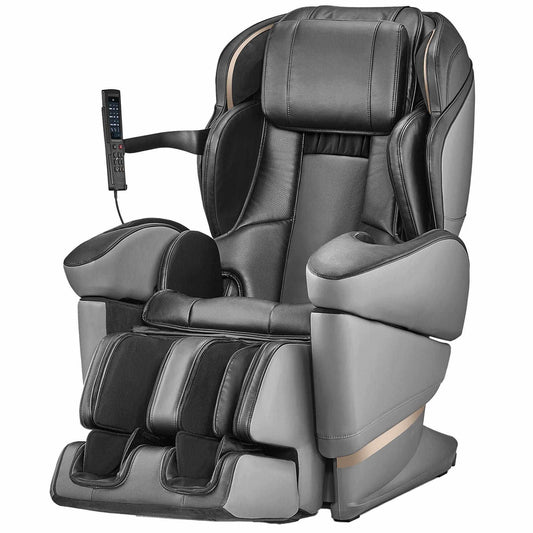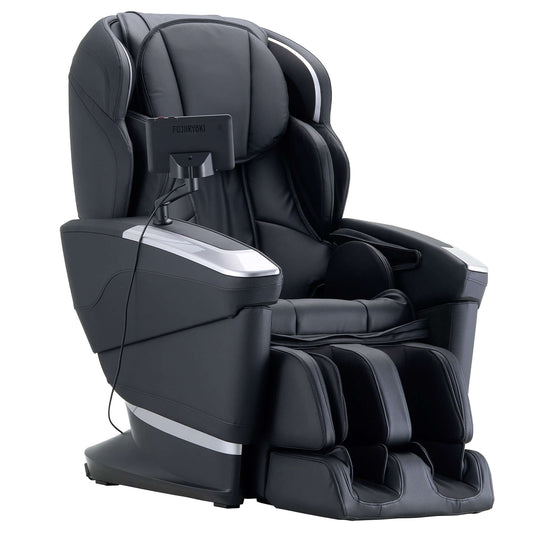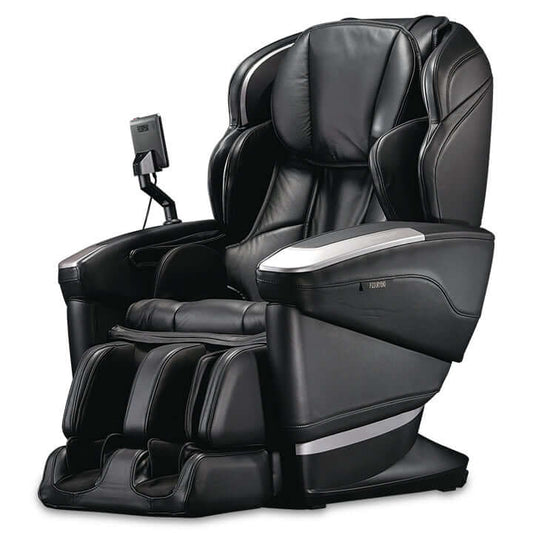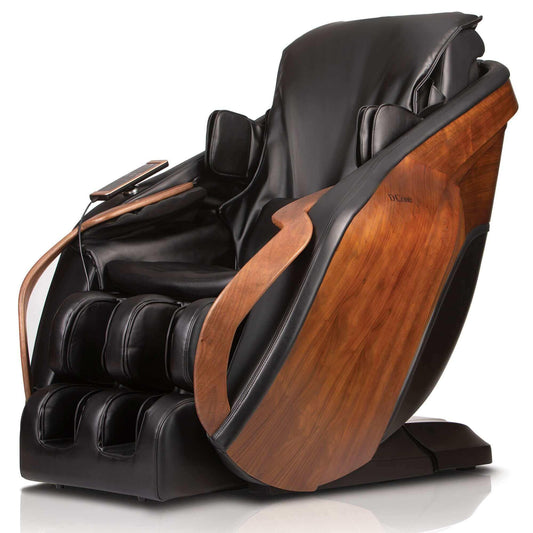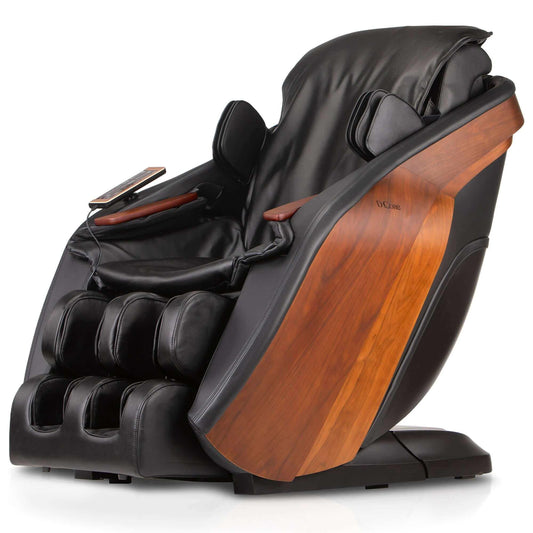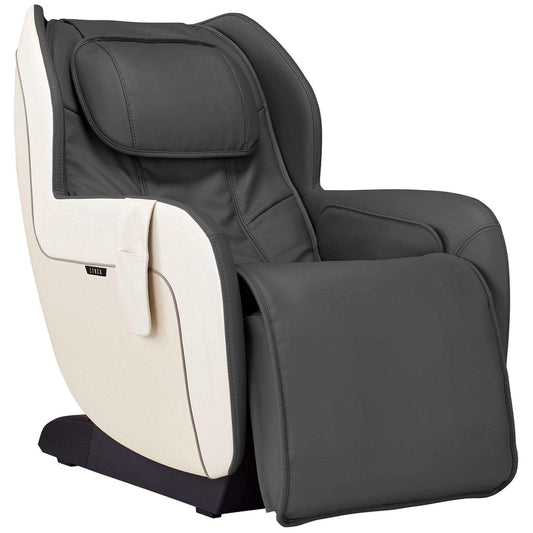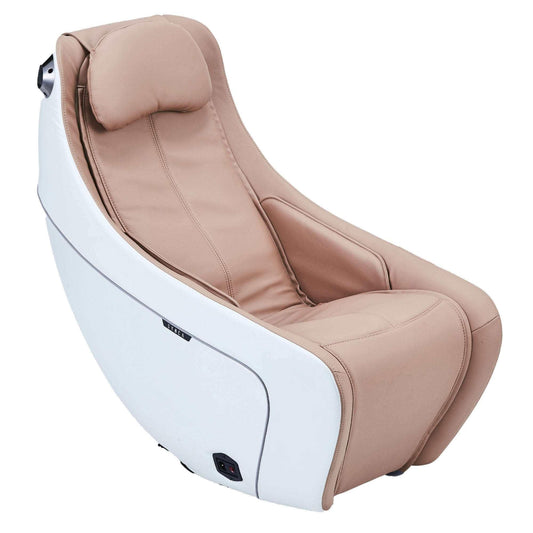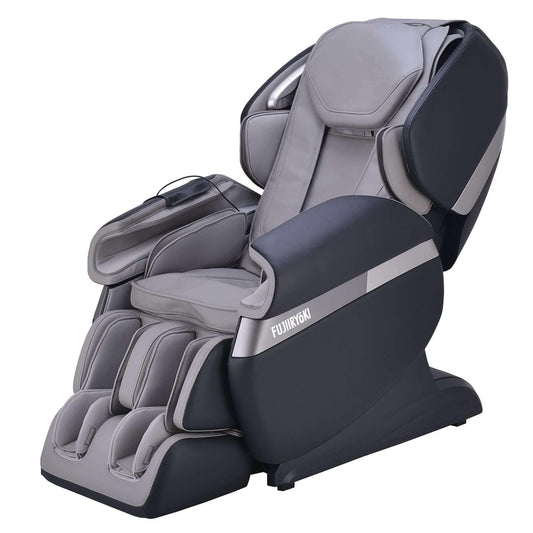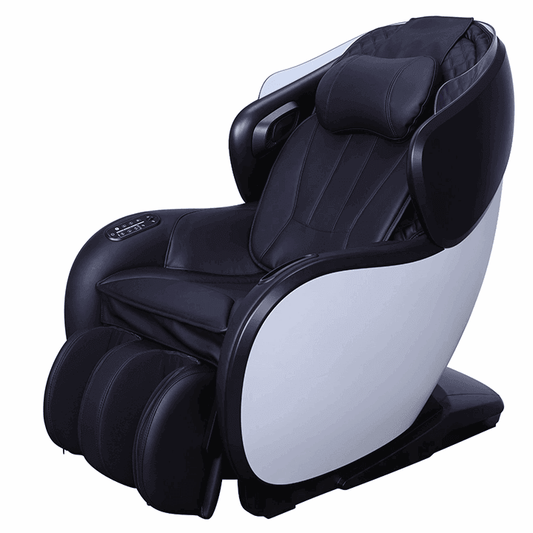
The Ultimate Guide to Understanding Massage Chair Features and Benefits
Introduction to Massage Chairs: An Overview
Welcome to the world of relaxation and comfort—the universe of massage chairs. In our fast-paced society, where stress and back pain have become common complaints, massage chairs offer a convenient solution for those seeking relief and tranquility within the comfort of their own homes. We see these sophisticated pieces of furniture not just as luxurious indulgences, but as beneficial investments in our well-being.
These chairs are no ordinary seats; they come equipped with advanced features designed to mimic techniques used by massage therapists. From soft rollers that knead your muscles to airbags that compress and release to promote circulation, massage chairs offer a variety of functions. Some chairs provide a full-body experience, while others focus on specific areas such as the back, neck, or feet.
- Deep tissue massages
- Shiatsu
- Zero-gravity recline
- Heated massages
- Reflexology for feet
- Customizable programs
- Body scanning technology
As we explore the landscape of massage chair features, we understand the potential health benefits they can offer. For example, regular use of a massage chair may:
- Alleviate back pain
- Reduce stress and anxiety
- Improve blood circulation
- Enhance sleep quality
- Boost immune system function
- Increase flexibility and mobility
- Promote overall wellness
The variety of massage chairs on the market means there’s something for everyone, whether you’re looking for a simple, straightforward massage or a customizable high-tech experience. Join us as we delve into the details of what makes these innovative chairs a cornerstone for relaxation and health in our ultimate guide to understanding massage chair features and benefits.
The Evolution of Massage Chair Technology
We’ve come a long way since the inception of massage chairs. From simple vibrating seats to high-tech personal masseuses, these advancements greatly enhance the therapeutic experience.
In the early days, massage chairs provided basic comfort with simple mechanisms. They typically featured vibration and rolling functions that targeted the user’s back. But as technology improved, so did the capabilities of these chairs.
We now see chairs that boast a variety of features:
3D and 4D Massage Mechanisms: Modern chairs offer more than just surface-level relief. They come equipped with 3D mechanisms that can move in and out, emulating the pressure and depth of a real masseuse’s hands. The introduction of 4D technology added another layer of sophistication with variable rhythm and speed, simulating a more human-like massage.
Body Scanning Technology: Today’s massage chairs are smart enough to scan your body and customize the massage to your specific shape and size, ensuring every nook and cranny gets attention.
Zero Gravity Positioning: Many chairs now offer Zero Gravity positioning, elevating the legs above the heart and distributing weight evenly. This position helps in reducing the strain on the body and allows for a deeper massage.
Heating Elements: The incorporation of heat therapy enhances muscle relaxation and improves circulation, adding another dimension to the massage experience.
Airbag Systems: Gone are the days of hard rollers only. Current models encompass multiple airbags that inflate and deflate to mimic compression massage techniques, effectively massaging limbs and boosting circulation.
Bluetooth and App Integration: For a more personalized and convenient experience, some chairs now include Bluetooth speakers and app integrations that allow users to control settings and even play their favorite relaxing tracks.
As we continue to innovate, the future of massage chairs promises to deliver even more tailored and immersive therapeutic experiences, uniting technology with relaxation in ways that were once unimaginable.
Decoding the Types: From Shiatsu to Zero Gravity
When exploring the realm of massage chairs, we’re met with an array of types, each boasting unique features and benefits. Let’s dive into some of the most popular ones:
Shiatsu Massage Chairs: Emulating the traditional Japanese Shiatsu technique, these chairs apply pressure to specific points along the body’s energy lines, or meridians. We often find that Shiatsu massage chairs help to alleviate stress, improve circulation, and reduce muscle tension.
Swedish Massage Chairs: Known for a gentler approach, Swedish massage chairs use techniques such as kneading, rolling, and tapping to enhance blood flow and relaxation. We appreciate these for their ability to soothe muscle aches and foster relaxation.
Zero Gravity Massage Chairs: Inspired by the posture astronauts take during liftoff, zero gravity chairs recline to a position where our legs are elevated above our heart. This position can distribute weight evenly, reduce spine pressure, and enhance the intensity of the massage experience.
Heated Massage Chairs: Incorporating heat into the massage process, these chairs offer a warmth that can penetrate deep into the muscles. We find that the heat helps to increase circulation and further relax tense muscles.
Airbag Massage Chairs: Utilizing strategically placed airbags, these chairs inflate and deflate to mimic the hands of a masseuse. The compression created by the airbags can be beneficial for improving lymphatic system circulation and reducing swelling.
Inversion Massage Chairs: By slightly inverting the body, these chairs help in reducing the effects of gravity on the spine. We’ve noticed that it’s especially beneficial for those with back pain, as it can help to elongate the spine.
Understanding the differences between these types of massage chairs allows us to make informed decisions based on our personal needs and preferences. Whether it’s relief from chronic pain or simply a means to unwind after a long day, there’s a massage chair type designed to meet those needs.
Evaluating Core Features: Rollers, Airbags, and Tracks
When we delve into the world of massage chairs, it’s clear that rollers, airbags, and tracks stand out as pivotal components that define our therapeutic experience. Understanding the nuances of these features can significantly enhance our ability to select the right massage chair catered to our needs.
-
Rollers: These are the mechanical hands of a massage chair. They come in various shapes and sizes, designed to emulate the pressure and movements of human hands and fingers. We look for a few critical aspects in rollers:
- The number of rollers, as more can equate to a more comprehensive massage.
- The type of movements they can perform, including kneading, tapping, rolling, or a combination.
- Three-dimensional (3D) or four-dimensional (4D) rollers that add depth and variation to the massage, making it feel more life-like.
-
Airbags: Often, we may underestimate the importance of airbags. These features complement rollers by providing a full-body experience that rollers alone cannot achieve. Airbags inflate and deflate to mimic compression massage techniques such as shiatsu. We assess airbags based on:
- Placement and quantity, which can affect the comprehensiveness of the massage.
- The intensity of the compression, which should be adjustable to cater to individual comfort levels.
-
Tracks: Tracks are what the rollers move along. There are typically two types:
- S-Track systems follow the natural curve of the spine, ensuring the rollers hit all areas of the back accurately.
- L-Track systems extend the roller path below the back to include the buttocks and sometimes even the hamstrings.
In evaluating these core features, it’s essential for us to consider the synergy between them. The right combination can lead to a more precise, holistic, and invigorating massage, thus enhancing the overall benefits of using a massage chair. By focusing on the details of rollers, airbags, and tracks, we can find a chair that not only relieves stress and tension but also provides a truly therapeutic experience.
The Magic of Heat Therapy in Massage Chairs
We often underestimate the power of heat therapy, yet incorporating it into our relaxation routines can work wonders. In massage chairs, heat therapy isn’t just about warming up; it’s a strategic feature designed to enhance the entire massage experience.
When we sit back in a massage chair that offers heat therapy, the gentle warmth penetrates our muscles, easing tension and promoting a deeper state of calm. It’s the same principle that applies when we use a hot pack on a sore area — heat increases blood flow, which in turn accelerates the healing process and provides relief from pain.
Here are the specific benefits of heat therapy in massage chairs:
Relaxation of Muscle Tissue: Heat allows muscles to relax more quickly and deeply, enhancing the effectiveness of the massaging mechanisms.
Pain Reduction: Heat can reduce pain signals sent to the brain, giving us a soothing, analgesic effect.
Increased Blood Flow: With improved circulation, more oxygen and nutrients are delivered to the affected areas, speeding up recovery from injuries and muscular aches.
Enhanced Massage Effects: Heat makes the body more pliable. When combined with the mechanical action of a massage chair, the massage penetrates further into the tissue.
Stress Relief: The warmth from the heat therapy feature in massage chairs can help reduce stress levels, contributing to emotional and physical wellness.
Improved Flexibility: Regular use of heat therapy can enhance flexibility, reducing the risk of strains and sprains during physical activities.
In our massage chairs, we ensure that heat therapy is evenly distributed, targeting key areas of the body like the lumbar region, where many of us carry tension. It’s essential to have adjustable settings so that we can customize the intensity of the heat according to our comfort levels and therapeutic needs.
The magic of heat therapy in massage chairs lies in the combination of traditional techniques with modern technology, providing a holistic approach to wellness that we can enjoy in the comfort of our own homes.
Customization Options: User Profiles and Memory Settings
When investing in a massage chair, one of the most sought-after features is the ability to personalize the massage experience to our specific preferences. Modern massage chairs often offer extensive customization options through user profiles and memory settings, which allow us to save our favorite massage programs and retrieve them with ease.
User profiles are incredibly beneficial when multiple people are using the massage chair. We can create individual profiles, ensuring that our massage settings are not altered by other users. Typically, these profiles can store information such as preferred intensity levels, speed, and areas of focus, allowing for a highly personal experience every time.
Memory settings in massage chairs are similar to those in modern cars, where seat positions and mirror settings can be saved and recalled at the touch of a button. In massage chairs, these memory settings enable us to:
- Save specific massage sequences we enjoy
- Quickly recall our most relaxing programs
- Avoid the hassle of manually adjusting settings every session
Here’s how we can utilize these features effectively:
- Explore the different massage options and find what suits us best.
- Adjust the intensity, focus area, speed, and other factors to our liking.
- Use the chair’s interface to save these settings into our user profile.
- Name the settings to remember them easily for next use, such as “Deep Tissue Evening” or “Post-Workout Relief”.
- Share the chair with others without worry, as our personal profile keeps our settings intact.
The advantage of having a massage chair with user profiles and memory settings cannot be overstated. It’s like having a personal masseuse who remembers exactly what we like, ready to serve us at any moment in the comfort of our own home.
In-Built Programs vs. Manual Control: Finding the Right Balance
When we delve into the world of massage chairs, it’s essential to understand the difference between in-built programs and manual control to maximize our relaxation and therapeutic experience.
In-built programs in massage chairs are designed to provide a range of automated massage routines. These programs cater to common needs like tension relief, stress reduction, and muscle recovery. We can simply select a program and trust the chair to run a predetermined sequence of movements and techniques, tailored to address general concerns.
-
Examples of In-Built Programs:
- Full-Body Relaxation
- Pain Relief
- Stress Therapy
- Stiff Muscles Release
Conversely, manual control allows us to customize our massage experience much more specifically. It’s perfect for targeting particular problem areas and tweaking the intensity, speed, and technique to our individual preference.
-
Manual Control Options Might Include:
- Specific body part focus (e.g., lower back, shoulders, feet)
- Adjusting roller width and pattern
- Altering massage styles (e.g., Shiatsu, kneading, tapping)
- Heat intensity control
Our quest for the right balance should be guided by our unique needs and preferences. If we’re new to massage or seeking convenience, in-built programs might be our best bet. For those of us who have specific needs or enjoy regular massages, the adaptability of manual control may serve better.
In the end, the right balance may involve using a combination of in-built programs for general maintenance and manual control for targeted relief. By taking advantage of both aspects, we optimize the benefits provided by our massage chair, ensuring a customized experience that caters to our personal well-being.
Understanding the Long-Term Health Benefits of Massage Chairs
When we consider integrating a massage chair into our wellness routines, we must look not only at the immediate relaxation it provides but also at the long-term health benefits. Over time, regular use of a massage chair can offer significant advantages:
- Stress Reduction and Relaxation: Massage chairs help in decreasing cortisol levels while boosting endorphins, which enhance our mood and reduce stress.
- Improved Circulation: The kneading and rolling functions promote better blood flow, delivering more oxygen and nutrients to tissues and organs.
- Better Sleep: The relaxation afforded by massage chairs can lead to improved sleep quality by helping the body to unwind and relax before bedtime.
- Pain Relief: Regular sessions can alleviate chronic pain, especially related to the back and neck, by reducing muscle tension and supporting spine alignment.
- Enhanced Immune System: Improved circulation can also lead to the efficient removal of toxins, which strengthens the immune system.
- Flexibility and Mobility: With consistent use, massage chairs can assist in maintaining joint flexibility and reducing stiffness, which is particularly beneficial as we age.
- Posture Improvement: Many of us suffer from poor posture due to sedentary lifestyles; a massage chair can address imbalances in muscle strength and help correct posture over time.
By embracing the regular use of massage chairs, we not only give ourselves moments of relaxation but also invest in our long-term health and well-being. It is a commitment to our bodies that can lead to less pain, better sleep, and improved overall health, ultimately enhancing the quality of our lives.
Material and Build: What Goes Into a Durable Massage Chair
When we consider the purchase of a massage chair, it’s crucial to understand the materials and construction techniques that contribute to its durability. The longevity and resilience of a massage chair depend on the quality and type of materials used in its production.
Frame Construction: The skeleton of a massage chair is its frame, often made of steel or high-quality plastic. We prefer steel for its strength and ability to withstand the mechanical movements and weight of the users over time.
Upholstery: The outer material should offer a blend of comfort, durability, and ease of cleaning. High-end massage chairs frequently employ synthetic leathers like polyurethane for their ability to resist wear and tear. Some chairs also use genuine leather, which can offer a premium look and feel but may require more maintenance.
Cushioning: The foam padding inside the chair impacts both comfort and durability. Memory foam is a popular choice as it molds to the body for support and retains its shape well over time. High-density foam is also effective for its resilience.
Mechanical Components: The quality of the moving parts like motors, rollers, and airbags is vital. We look for industrial-grade components that are engineered for long-term use without failing.
Electronics: Lastly, the electronic systems that control the chair need to be robust and well-protected against the vibrations and movements common in massage chairs. Circuit boards should be securely housed, and wiring must be insulated and flexible.
In crafting a massage chair that stands the test of time, every material and construction detail matters. We seek out chairs that are built with care, using top-grade materials to ensure a lasting investment in our health and well-being.
Ease of Maintenance: Keeping Your Massage Chair in Top Condition
Maintaining your massage chair is crucial for ensuring longevity and optimal performance. We’ve put together a guide to help you keep your chair in top condition.
Regular Cleaning: Like any piece of furniture, your massage chair can accumulate dust and dirt. We recommend wiping down the chair with a soft, dry cloth regularly. For a deeper clean, use a damp cloth with mild soap, but always make sure to dry the chair thoroughly to avoid any moisture damage.
Leather Care: If your chair is upholstered in leather, invest in a quality leather conditioner. We advise applying the conditioner every six months or as directed to keep the leather supple and prevent cracking.
Mechanism Check: Every few months, take the time to check the moving parts of your chair. We encourage listening for any unusual noises and consulting the manual or a professional if you notice anything out of the ordinary.
Software Updates: Modern massage chairs come with software that may require updates. We recommend checking the manufacturer’s website periodically for updates to ensure your chair’s features and functions are running smoothly.
Professional Servicing: While many aspects of maintenance can be handled at home, we recognize the benefit of professional servicing especially for complex issues. Consider scheduling an annual check-up with a certified technician who can inspect electrical components and other specialized parts of your chair.
Warranty: Always keep your warranty information accessible. In case of any major issues, we suggest referring to the warranty to understand what repairs and services are covered.
By following these simple maintenance steps, we ensure that our massage chairs remain a reliable source of relaxation and therapeutic relief for years to come.
Space and Placement Considerations for Your Massage Chair
When selecting a massage chair for our homes or businesses, it’s crucial to consider where it will go and how much space it will need. We should think about not only the size of the chair but also the space required for its full range of motion. Here are some key aspects we must keep in mind:
Measure Your Space: Before we purchase a massage chair, measuring the area where we plan to place it is essential. Remember, chairs recline and some feature leg extensions, so consider the space needed when it’s both in its upright and fully reclined positions.
Power Source Accessibility: We’ll want to make sure our chair is near an electrical outlet and avoid using extension cords if possible for safety and aesthetics.
Ease of Movement: If we’re placing the massage chair in a living space or an area where people frequently move around, we’ll need to ensure there’s ample room to walk past the chair without obstruction.
Floor Protection: Massage chairs can be heavy, so we should think about the type of flooring we have. An area rug or mat can protect hardwood or carpet from indentations or marks.
Ambiance: For maximum relaxation, the chair should be in a calm and quiet area. Avoid bustling places with heavy foot traffic or noisy appliances.
Privacy: Especially in a commercial setting, we should place chairs in semi-private areas where users can relax without the feeling of being on display.
Consider the User: If the chair will be used by someone with mobility issues, placing it in a location where it’s easy to get in and out of is necessary.
By thoroughly addressing these space and placement considerations, we can ensure our massage chair will provide us with the optimal experience it’s designed for.
Safety Features and Best Practices for Massage Chair Usage
As we explore the advantages of owning a massage chair, it’s vital to address safety features and best practices to ensure a secure and beneficial experience. Here are key points to consider:
Weight and Size Limitations
- Each massage chair has a weight and size capacity. We must adhere strictly to these limits to avoid damaging the chair and ensuring our safety.
Electrical Safety
- Always plug the chair into a grounded outlet. Avoid using extension cords or power strips, which can overheat or fail, leading to potential electrical hazards.
Placement and Stability
- Secure placement on a flat surface is crucial. This prevents the chair from tipping over during use.
Child and Pet Safety
- Keep children and pets away from the moving parts. The automated features can pose harm if they interact with the chair unsupervised.
Clothing and Hair
- To prevent entanglement, we should wear appropriate clothing and ensure long hair is tied up when using the massage chair.
Health Contraindications
- Some health conditions may not be compatible with massage chairs. We should consult with a healthcare provider if there are concerns about blood clots, fractures, tumors, or other medical issues that might be exacerbated by a massage chair.
Regular Maintenance
- We should perform regular inspections and maintenance to ensure all the components are in working order. This includes cleaning the chair and checking for any loose parts or exposed wiring.
By adhering to these safety features and best practices, we can enjoy the full spectrum of benefits offered by our massage chair while minimizing risks. Always refer to the user manual for specific guidelines related to your particular massage chair model.
Breaking Down the Investment: Cost vs. Benefits Analysis
When considering the purchase of a massage chair, it’s essential that we examine both the financial outlay and the potential benefits. To help with this, we’ve crafted a detailed cost versus benefits analysis.
Costs:
When purchasing a high-quality massage chair, there are several cost factors we need to consider:
- Initial Purchase Price: This can range from a few hundred to several thousand dollars, depending on features and quality.
- Maintenance Costs: Ongoing maintenance to keep the chair in top operational condition, including occasional repairs or part replacements.
- Electricity Usage: Though generally minimal, massage chairs do contribute to your electric bill.
- Space: The physical space the chair occupies is a cost, particularly if it leads to the need for a larger living area.
Benefits:
On the benefit side of the equation, we need to measure the tangible and intangible returns:
- Physical Relief and Health Benefits: Regular massages can relieve pain, reduce stress, and improve circulation.
- Convenience: Having a massage chair at home means no appointments or travel is necessary.
- Long-Term Savings: Over time, the cost per massage session decreases compared to visiting a spa or health professional.
- Improved Quality of Life: The comfort and relaxation a massage chair provides can enhance overall well-being and life satisfaction.
We must weigh these costs against the benefits to determine if a massage chair is a wise investment. For many, the long-term health benefits and convenience greatly outweigh the initial financial outlay, making a massage chair a valuable addition to their home wellness regimen.
Future of Massage Chairs: Trends and Innovations to Look Out For
As we explore the evolving world of massage chairs, several exciting trends and innovations stand out that promise to redefine our relaxation experiences. Here’s what we anticipate in the near future:
- Integration with Smart Home Technology: We expect massage chairs to become fully integrated with smart home systems, allowing users to control their massage chair settings through voice commands or mobile apps.
- Customization Using Artificial Intelligence: Artificial intelligence (AI) will likely play a significant role in personalizing massage experiences. By analyzing user preferences and body responses, AI can adjust pressure, heat, and techniques in real-time.
- Advanced Body-Scanning Technology: Future massage chairs will boast enhanced body-scanning technologies, providing pinpoint accuracy for a tailored massage experience that targets every unique body shape and posture.
- Virtual Reality (VR) Integration: Imagine combining a massage with a VR experience to transport users to tranquil environments. This synergy will elevate the stress-relief benefits of massage chairs.
- Eco-friendly Materials and Designs: As environmental concerns grow, we’ll see massage chairs manufactured with sustainable materials and energy-efficient designs without compromising on comfort or functionality.
- Progressive Health Monitoring: Health monitoring features will likely become standard, with massage chairs being able to track metrics like heart rate and stress levels, contributing to overall health management.
- Wearable Technology Synchronization: The possibility of synchronizing massage chairs with wearable technology means your chair could automatically respond to your body’s need for relaxation or invigoration as sensed by your smartwatch or fitness tracker.
These advancements ensure that not only will massage chairs continue to soothe and rejuvenate our bodies, but they will also become essential tools for health monitoring and integrated living. Keep an eye on these trends, as the future of massage chairs holds a promise of groundbreaking comfort and wellness innovation.
Choosing the Best Massage Chair: A Comprehensive Buyer’s Guide
When we’re in the market for a massage chair, our ultimate goal is to select a model that offers the best combination of features, comfort, and value for our money. Navigating through the myriad of options can be overwhelming, so we’ve outlined a step-by-step guide to help make an informed decision.
Assess Your Needs
Firstly, we need to consider our individual needs. Do we want a chair for pain relief, stress reduction, or to enhance our overall wellness routine? Identifying our primary objectives will narrow down the search to chairs that specialize in those areas.
Define Your Budget
Setting a budget is critical. We can find massage chairs ranging from a few hundred to several thousand dollars. It’s important to balance cost with features we cannot do without.
Research Features and Benefits
Let’s delve into the features:
- Rollers and Nodes: These determine the types of massages offered. Shiatsu, kneading, tapping, and more should be looked into.
- Intensity Settings: Chairs with adjustable intensity settings ensure massages cater to our sensitivity and preference.
- Size and Space: We must ensure the chair fits in our chosen space and can accommodate our body size comfortably.
- Design and Materials: A chair should not only feel good but also blend with our home decor. High-quality materials mean greater durability.
Try Before You Buy
If possible, we should test out chairs in-store to get a feel for their comfort and the effectiveness of their massage styles.
Read Reviews and Ask for Recommendations
Finally, we should read customer reviews and ask for recommendations from friends or online forums to learn about the long-term reliability and customer service of the manufacturer.
By following these steps, we stand a better chance of finding the best massage chair to suit our personal needs and preferences.
Conclusion: Embracing the Ultimate Relaxation Experience
In our journey through the world of massage chairs, we have peeled back layers of technology and comfort to understand what makes the perfect relaxation experience. We’ve delved into a plethora of features, from Zero Gravity design to the intricacies of 3D rollers, and learned how each element contributes to our well-being.
By now, we recognize that:
- Massage chairs are more than just luxurious seating; they are wellness tools that can alleviate stress, improve circulation, and support recovery.
- Customization options allow us to tailor each massage session to our precise needs, ensuring maximum benefit and enjoyment.
- The integration of heating elements, stretching functions, and music systems transforms a simple massage into a holistic relaxation experience.
We must acknowledge these chairs’ potential in contributing to our health regimen. With regular use, a massage chair can serve as a private sanctuary, where the cares of the world can’t intrude, and where we can recharge our batteries in tranquil solitude.
While the initial investment may seem substantial, the long-term benefits, both physical and psychological, can be profound. As we embrace this ultimate relaxation experience, we invite comfort and serenity into our daily lives. Together, let’s consider a massage chair not as an indulgence, but as a mindful addition to a balanced lifestyle.
The path to wellness is a personal one, and at the heart of it, our collective quest for relaxation and relief finds a resting place in the embrace of a massage chair—truly, the pinnacle of home-based restorative therapy.

